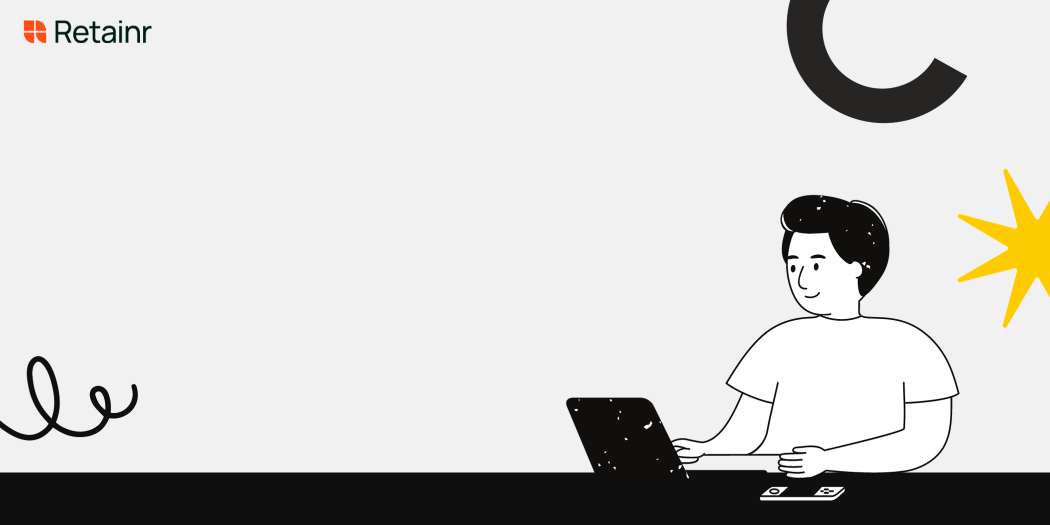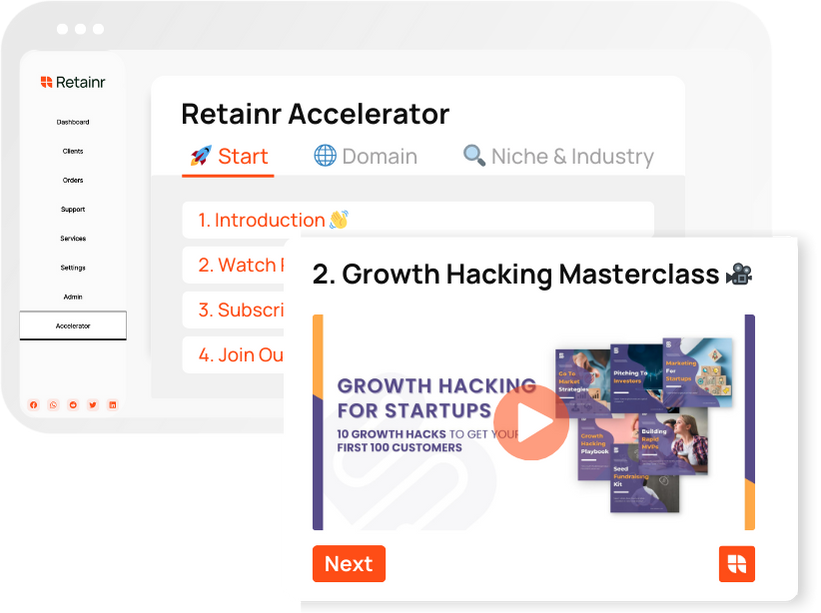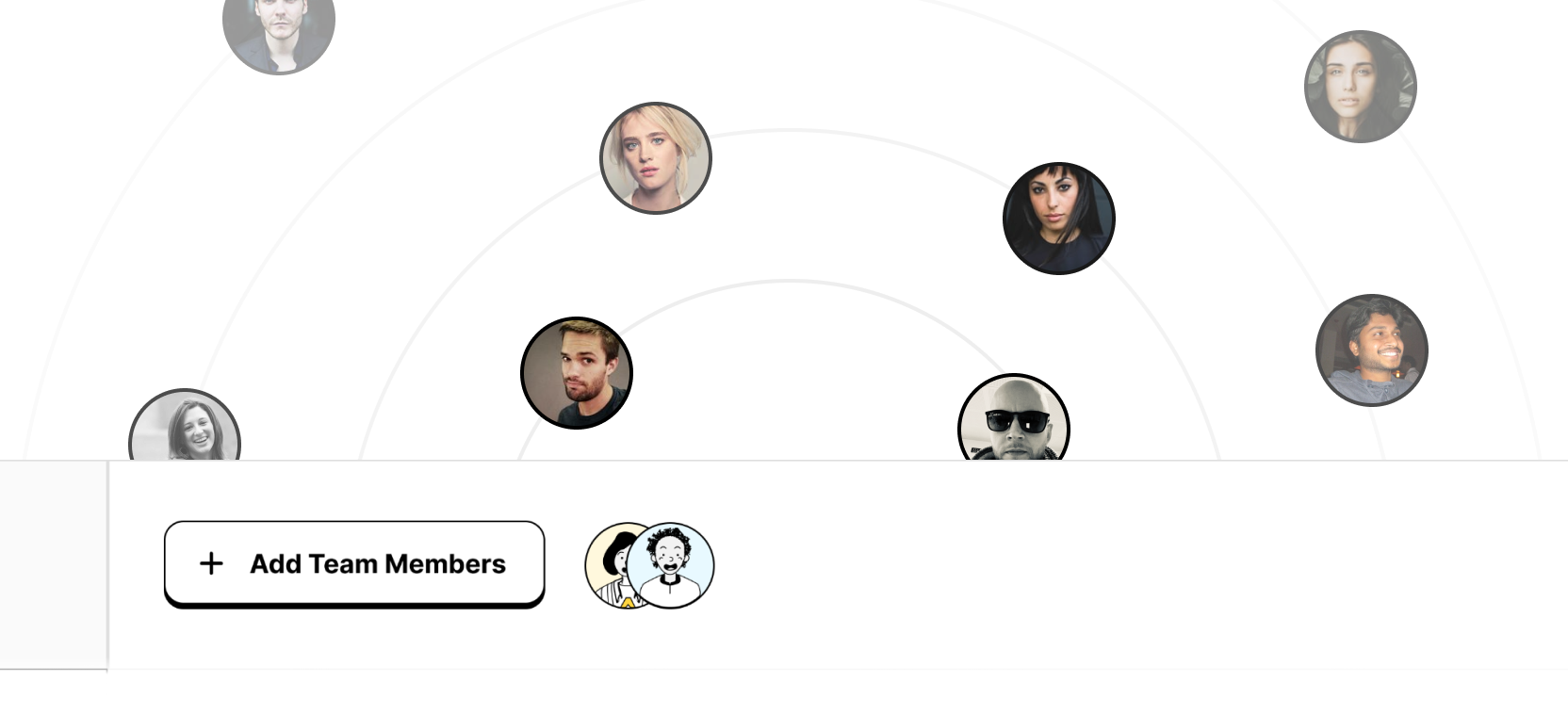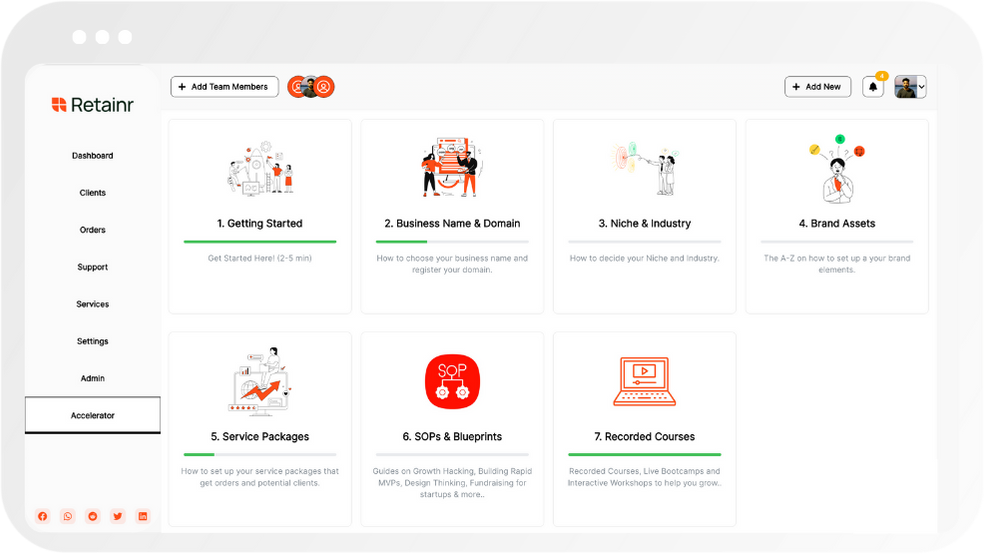
How to Build a Successful Freelance Portfolio in IT Services
Build with Retainr
Sell your products and services, manage clients, orders, payments, automate your client onboarding and management with your own branded web application.
Get Started1. What are the key elements needed in building a successful freelance portfolio in IT services?
Key Elements for a Successful Freelance Portfolio in IT Services
Building a successful freelance portfolio in IT services starts with showcasing your key skills and highlights in the industry. It must include a comprehensive display of your experience, an overview of your services and clearly defined previous projects. Consider the following when presenting your skills:
- Technical Skills: Always update your portfolio with the latest technologies you've mastered to stay ahead of the competition.
- Certifications: Obtaining official certificates in your area of expertise does not only enrich your knowledge, but also proves your commitment to continuous learning.
- Relevant Experience: Ensure to highlight your relevant experience to your prospective clients.
The Details of Your IT Services
In addition, your IT services should be clearly highlighted in your portfolio. The reasons for this are twofold. First, it informs potential clients of your work scope and second, it helps to quickly identify if your services align with the tasks at hand. Included should be:
| Service | Description |
|---|---|
| Database Management | Organizing and managing an entities data efficiently |
| Software Development | Designing, programming, documenting, testing, and bug fixing in creating and maintaining applications, frameworks, or other software components |
| Tech Support | Providing assistance related to technical issues, and managing and resolving them efficiently |
Display Your Previous Projects
Furthermore, listing your previous projects is critical to demonstrate your experience and expertise in real-world applications. Make sure to cover:
- Project Name: Remember, the name also needs to resonate the purpose of the project.
- Client's industry: Providing an idea of what kind of industries you have experience in.
- Services Provided: Give a brief overview of what services you provided for each project.
- Result and Impact: Demonstrate the direct impact of your work on the business or project.
2. How can I showcase my technical skills in my freelance portfolio?
Highlighting Technical Skills
Presenting your technical skills-informed freelancing portfolio can be done in numerous ways. When it comes to showcasing your skills, the key is to keep everything concise, engaging, and accessible. A simple list can efficiently showcase your knowledge in different areas, for instance:
- Software Development
- Cloud-based Computing
- Database Management
- Network Architecture
- Cybersecurity
Project Showcase
Another efficient way to display your IT skills is by exhibiting real projects that you have completed in the past. Providing a brief outline of each project, the challenges encountered and the eventual solutions can paint a clearer picture of what you can offer. Here's an example of how you might structure this:
| Project Name | Description | Challenges | Solutions |
|---|---|---|---|
| Website Design for XYZ Company | Custom website development using HTML, CSS, and JavaScript | Client had a strict deadline and specific design requests that changed frequently | Created a flexible design and carried out effective time management to meet the deadline |
Certifications and Courses
Attaining industry-recognized certifications not only advances your IT expertise but also conveys to potential employers or clients that you’re committed to professional development. You may list all the relevant certifications like:
- MCSE (Microsoft Certified Solutions Expert)
- PMP (Project Management Professional)
- CSSLP (Certified Secure Software Lifecycle Professional)
- OCP (Oracle Certified Professional)
In summary, an effective IT freelance portfolio should cast a spotlight on your technical aptitudes, prior completed projects and your pertinent professional certificates. It's also important to keep the portfolio updated as you build more expertise and take on additional training.
3. What examples of my work should I include in my IT services freelance portfolio?
Choosing the Right Examples
Choosing the right projects to include in your IT portfolio can be challenging, especially when you have acquired an extensive body of works. Here are some guidelines you can follow:
- Include projects that highlight your unique skills or specializations. This could be work you've done on machine learning algorithms, database management, cybersecurity, and so on.
- Showcase works that resulted in measurable improvements or had extensive impact for a client. Preferably, include metrics or quantifiable data to support your claims, like improved system efficiency by a certain percentage, or reduced downtime, etc.
- Provide a diverse range of projects. If you're a software developer, don't just stick to one type of application or programming language, unless you specifically want to be known for that niche.
Presenting Your Work
Remember, how you present your work samples also counts. Try to keep these points in mind when setting up your portfolio:
- Describe the problem and your role in solving it. Make sure that your contribution to the project is clearly expressed.
- Show the process. Screenshots, code snippets, diagrams and other visuals help clients understand the complexity and thoroughness of your work.
- Include testimonials or feedback from the client. This boosts credibility and proves your ability to adequately meet clients' needs.
Categories and Their Importance
To organize your portfolio better, categorize your projects under various IT domains. A tabular structure could help. A possible categorization might look like this:
| Category | Example Projects |
|---|---|
| Web Development | Website redesign for XYZ Company, E-commerce platform for ABC Store, Responsive site for DEF Organization |
| Cybersecurity | Security audit for GHI Corp, Firewalls setup for JKL Corp, Anti-phishing system for MNO Corp |
| Database Management | Database optimization for PQR Company, Data migration for STU Corp, SaaS subscription database for VWX Company |
4. How should I structure my freelance portfolio for IT services?
Creating the Structure
The step of structuring your portfolio is critical as it can make or break your chances of securing potential clients. First and foremost, you must have a clear and concise introduction about yourself. This includes your skills, experience, and specializations in the IT field. Secondly, include a list of services that you offer. This needs to be detailed and specific, indicating what potential clients should expect from you. Lastly, provide relevant and impressive samples of your work along with client testimonials. This would fortify your credibility and skills.
Listing Your Services
When listing the IT services you offer, be detailed and include any relevant skills that could make you stand out. Below is an example of how you could list your services in a clear and concise manner:
| Services | Description |
|---|---|
| Web Development | Full-stack development services including HTML, CSS, PHP, Python, etc. |
| Database Management | Relational database design, implementation, management, and problem-solving. |
Highlighting Client Testimonials and Work Experience
Presenting client testimonials helps to build trust with potential clients. This could be a simple quote complimenting your work. Similarly, demonstrating your work experience helps present your professional journey and growth. Here's how you could structure this:
- Client Testimonial: "Exceptional web development work. Our website now runs smoother and faster."
- Work Experience:
- ABC Company: Worked as an IT consultant from 2015-2017.
- XYZ Corporation: Served as a Web Developer from 2018-2020.
5. What personal information should I include in my IT portfolio?
Basic Personal Information
The first essential component of your IT portfolio should be your personal information. You want potential clients to be able to contact you easily, so include the following:
- Your full name. Professionalism is key, so use your actual name instead of a screen name or alias.
- Contact Information. This can comprise an email address, a phone number, or a link to your professional social media profiles. Remember to use only your professional contact details.
- Location. If you operate remotely, the city or country where you live can help clients identify time zones.
Professional Overview
In addition to contact details, your IT portfolio should include a snapshot of your professional experience. This should cover:
- A brief summary of your professional experience and skills in IT.
- Specific IT services you specialize in, such as network administration, software development, or data analysis.
- A reference to the years of experience you've had in the IT field.
Additional Personal Details
Lastly, while not mandatory, giving a glimpse into your personality can make your portfolio more unique and memorable. You can include:
- Personal Traits: Attributes that make you a good freelancer. This could be your ability to work under tight deadlines, or your excellent communication skills.
- Hobbies or personal projects: Sharing these insights can help clients see you as a well-rounded individual. Just keep it relevant or interesting.
| Section | Information to Include |
|---|---|
| Basic Personal Information | Full name, Contact Information, Location |
| Professional Overview | Brief summary of skills and experience, Specializations, Years in the field |
| Addtional Personal Details | Personal Traits, Hobbies or personal projects |
6. Should I include client testimonials in my IT services portfolio?
Importance of Client Testimonials
Customer testimonials serve as solid social proof demonstrating your abilities as a service provider. They are the positive reviews or feedback from clients you served in the past, offering 3rd party credibility. Here are some reasons why you should include testimonials in your IT service portfolio:
- Establishes Credibility: Seeing a third-party endorsement of your skills and work ethic can reassure potential clients of your abilities.
- Provides a Real-life Scenario: Testimonials can highlight specific examples of how you provided solutions for previous clients, providing a tangible showcase of your expertise.
- Persuasive: Potential clients are more likely to trust their peers (other clients) over your self-promotion or sales pitches.
How to Include Testimonials
When incorporating testimonials into your portfolio, there's more to it than copying and pasting kind words wherever they fit. A table format can help present testimonials more clearly and professionally:
| Name | Company | Testimonial |
|---|---|---|
| John Doe | ABC Company | I thoroughly recommend this professional who exceeded our expectations. |
Asking for Testimonials
If you are yet to gather testimonials, start now. Here are some steps to guide you:
- Reach out to past and current clients asking for a few sentences about their experience working with you.
- Let them know where you plan on using their testimonial—it could be on your website, a social network, or other platforms where you display your portfolio.
- Be sure to ask for their permission to use their name and company name, to add credibility to the testimony.
In conclusion, testimonials are an essential part of a successful portfolio. The ability to demonstrate the quality of your work through your clients' words can be a powerful tool in winning new business.
7. How do I show that I have kept up-to-date with the latest IT developments in my portfolio?
Highlighting Up-to-Date Knowledge in Your Freelance IT Portfolio
Keeping up-to-date with the latest technologies and industry trends is crucial in the fast-paced domain of IT services. Demonstrating this knowledge can be done in several creative and effective ways within your portfolio.
List of the Latest IT Skills on a Separate Page
One way to show that you are keeping up with the latest IT developments is by having a dedicated page within your portfolio where you list all the modern technologies and frameworks you have learned. You can categorize this list based on programming languages, software, tools, and other relevant parameters.
| Category | Skills |
|---|---|
| Programming Languages | Python, JavaScript, Swift |
| Software | Adobe XD, Sketch, Docker |
| Tools | Trello, Slack, Postman |
| Frameworks | React.js, Angular.js, Vue.js |
Evidence of Continued Learning and Development
Show evidence of your continued learning - it could be online course certificates, testimonies from clients on successfully using the latest technologies, or blog articles you have written on the newest industry trends. Here’s how you can include these:
- Online Course Certificates: Include a screenshot or a link to online course certificates you have completed.
- Client Testimonies: A testimonial from a client that appreciated your use of a cutting-edge technology in their project is pure gold.
- Blog Articles: If you maintain a blog where you write about IT, that is another great way to show that you are keeping up with the industry. Include a few links to your blog posts which highlight your use and understanding of emerging technologies.
8. Can I include projects that were not commercially successful in my portfolio?
Benefits of Including Unsuccessful Projects
When constructing a freelance IT portfolio, it's natural to only want to show off your most successful work. However, including projects that were not as commercially successful can also have its advantages:
- Problem-solving Skills: Discussing where things went wrong in a project, how you responded, and how those lessons have improved your skills can demonstrate your problem-solving abilities.
- Resilience: Projects that faced challenges or did not end as planned can serve as evidence of your resilience and perseverance.
- Experience: Every project, successful or not, adds to your breadth and depth of experience. Showcasing a range of projects can highlight your ability to adapt to different situations.
How to Include These Projects
If you decide to include less successful projects in your IT portfolio, consider these strategies:
- Be Honest: Openly discuss the project's challenges and how they affected the outcome. Honesty can add authenticity to your portfolio.
- Show Growth: Emphasize what you learned from the project, how you've applied these experiences to subsequent work, and how it has made you a better freelancer.
- Visual Presentation: Use screenshots, charts, or diagrams to visually show the problem and your solutions. Make sure your presentation is visually engaging and clear.
Table for Evaluating Project Inclusion
Use the table below as a guideline for deciding whether or not to include the unsuccessful project in your portfolio:
| Consideration | Yes | No |
|---|---|---|
| Did I learn valuable skills? | If the project helped you develop new, marketable skills, it might be worth including. | If the project didn’t contribute to your skill set, it may not have a place in your portfolio. |
| Can I showcase creative problem-solving? | If the project required creative solutions, it could showcase your problem-solving ability. | If you didn’t have to think on your feet or devise innovative solutions, consider omitting it. |
| Can I visually communicate the project effectively? | If you can depict what went wrong and how you solved it, it’s a good candidate for inclusion. | If it’s challenging to visually present the project and your work, it might be better to leave it out. |
9. How often should I update my portfolio?
Portfolio Update Frequency
Regular updates to your portfolio play a critical role in not just maintaining, but elevating your professional standing in the IT services field. Generally, it is recommended to update your portfolio whenever there is new work to showcase, at least every three to six months, and/or whenever your skills, services, or goals change. However, the frequency of updates may largely depend on the pace of your career progress, types of projects in your portfolio, and trends in the industry.
- When there is new work to showcase: This is an obvious but crucial point. Don't wait for months to update your latest project. As soon as you've completed a significant piece of work, consider adding it to your portfolio.
- Every three to six months: Regular evaluations every quarter or half-yearly can work well. It keeps your work fresh and relevant, and might also help you spot any outdated samples or obsolete skills that need to be replaced or removed.
- When your skills, services or goals change: If your offerings or ambitions evolve, reflecting those changes in your portfolio is paramount. If you've just learned a new skill or started offering a new service, update your portfolio accordingly.
Table for Reference
| Update Reason | Update Frequency |
|---|---|
| New Showcase Work | Immediately after project completion |
| Regular Evaluation | Every 3-6 Months |
| Change in Skills/Services/Goals | As soon as they change |
Regular updates will not only ensure that your portfolio remains a true reflection of your abilities and offerings but it will also be instrumental in attracting new prospects, retaining existing clients, and growing your freelance business. Remember, your portfolio is more than just a gallery of your works, it's a testament to the journey of your professional growth and evolution.
10. How can I make my portfolio stand out amongst other IT services freelancers?
Strategic Ways to Make Your Portfolio Stand Out
Having your portfolio stand out among other IT service freelancers is a combination of a professional outlook, regularly updated high-quality projects and a personal touch. To increase your chances of being noticed by potential clients, consider following these steps:
- Develop unique and innovative projects that differentiate your work from typical IT services.
- Maintain a blog where you share your knowledge and expertise in the field. This creates trust and places you as an industry thought leader.
- Display testimonials from satisfied clients as part of your portfolio to prove your professional reliability.
- Include any certifications and relevant educational background that creates trust and shows your level of knowledge and skills in IT services.
Creating a Visual Appeal
Creating a visually appealing portfolio is paramount. No matter how top-notch your skills and projects are, if they're presented in a cluttered and unattractive manner, it will repel your potential clients. Consider the following for an appealing layout:
- Use a professional, clear and simple design that is easy to navigate.
- Ensure that the portfolio is mobile-friendly as most clients will probably visit your site using their smartphones.
- Select a few of your best works to showcase so as not to overwhelm visitors.
IT Portfolio Content Organization
One more key point to consider is how you organize your content. This makes it easier for clients to understand what your specialties are. Here's a suggested table for your portfolio organization:
| About Me | Introductory section about yourself and why you chose IT services as a career. |
|---|---|
| Past Projects | Subsection displaying your most successful projects with short descriptions and links if applicable. |
| Services | Detailed list of services you offer and your specializations. |
| Testimonials | Positive reviews and testimonials from your past clients. |
| Contact Me | Your contact information and a simple pathway for potential clients to reach out. |
Conclusion
Building a Successful IT Services Freelance Portfolio
As an IT freelancer, your portfolio is your most potent tool. It showcases your skills, past projects, and client testimonials, and it acts as your public resume. Whether you're a developer, designer, or consultant, a strong portfolio can set you apart from competitors and open doors to lucrative opportunities.
Steps to Create Your IT Services Freelance Portfolio
1. Identify Your Skills: Start by listing your core skills and showcasing them with a detailed description.
2. Showcase Your Work: Include samples of work you've done. If you're new to freelancing, personal projects or pro-bono work can begin filling your portfolio.
3. Share Client Testimonials: Display reviews from past clients. If you're new to the industry, get testimonials from professors, colleagues, or clients you've done volunteer work for.
4. Personal Branding: Ensure your portfolio reflects your personality and style. Your portfolio should paint a picture of who you are as a professional and what clients can expect when working with you.
Manage Your Portfolio with Retainr.io
Beyond creating a successful portfolio, managing it and your clients efficiently is paramount. That's where Retainr.io comes in. Retainr.io is a whitelabel software designed for your specific IT services requirements. It allows you to sell services, manage clients, orders, and receive payments through your own branded app.
The Benefits of Retainr.io
With Retainr.io, you can stay organized, streamline processes, and grow your freelance IT business. Its comprehensive features make client communication, sales, order tracking, and payment processing simple and efficient. Plus, it's customizable to your brand, creating a cohesive, professional presentation that can further bolster your portfolio.
Visit www.retainr.io to learn more about how Retainr.io can revolutionize your IT services freelance portfolio and business management.
Boost Your Agency Growth
with Retainr Accelerator
Uncover secrets, strategies, and exclusive blueprints to take your agency's growth to the next level — from marketing insights to effective presentations and leveraging technology.

SOPs, Cheatsheets & Blueprints
Leverage 50+ SOPs (valued over $10K) offering practical guides, scripts, tools, hacks, templates, and cheat sheets to fast-track your startup's growth.
Connect with fellow entrepreneurs, share experiences, and get expert insights within our exclusive Facebook community.
.jpg)

Join a thriving community of growth hackers. Network, collaborate, and learn from like-minded entrepreneurs on a lifelong journey to success.

Gain expertise with recorded Courses, Live Bootcamps and interactive Workshops on topics like growth hacking, copywriting, no-code funnel building, performance marketing and more, taught by seasoned coaches & industry experts.

.jpg)

.jpeg)


